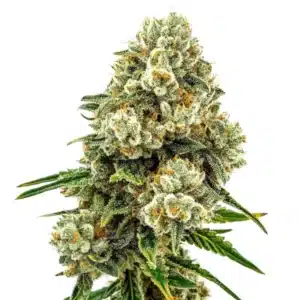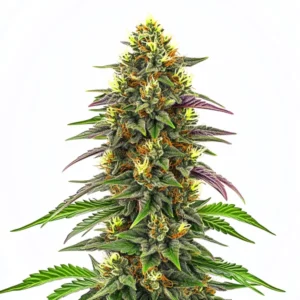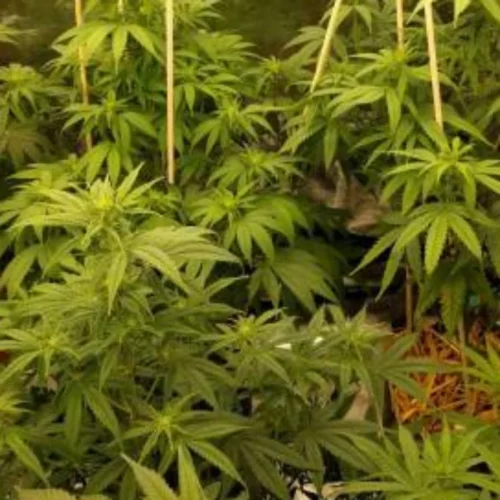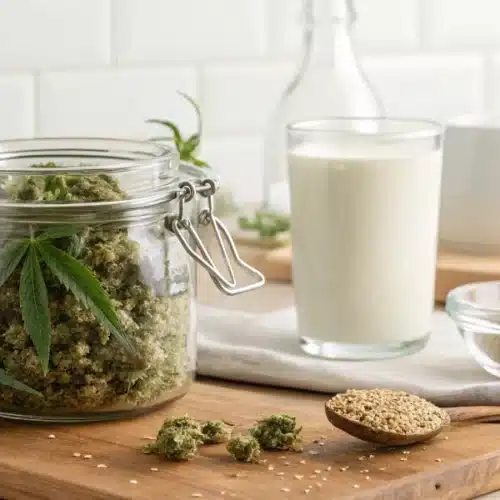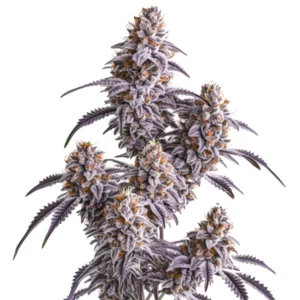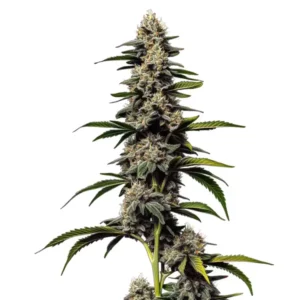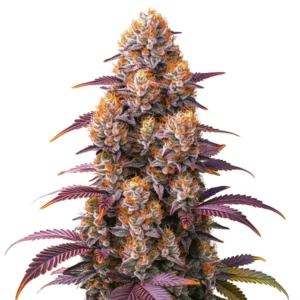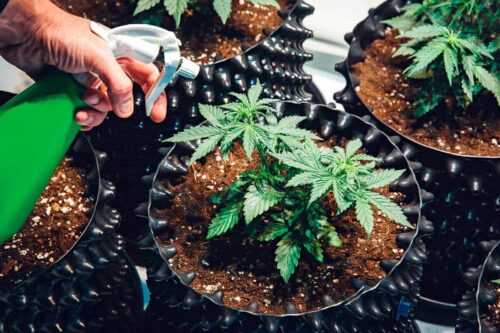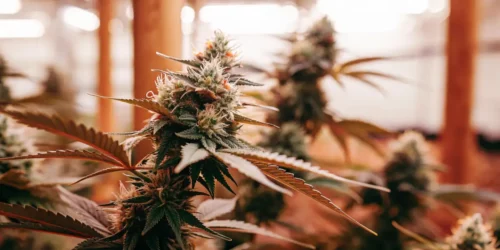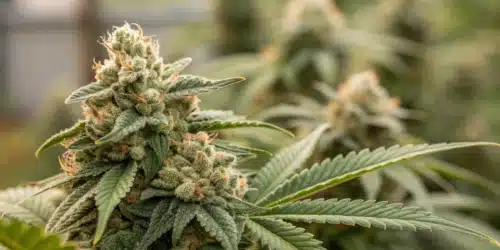Cannabis plants can present a wide range of symptoms when they experience stress, and wrinkly cannabis leaves are among the more common signs that something isn’t right. When these leaves appear misshapen or crinkled, growers often face concerns about the plant’s health and the potential impact on its yield. Identifying the causes behind wrinkled or wrinkly leaves can be tricky because multiple factors can lead to this issue. However, by systematically examining the plant’s environment, feeding regimen, and overall care, it’s possible to pinpoint the root cause and take steps to correct it.
Wrinkly cannabis leaves can result from a variety of factors, including environmental stresses, poor watering practices, nutrient deficiencies or toxicities, pest infestations, diseases, or even genetic traits. Each of these issues needs to be addressed differently, and growers must learn how to observe wrinkly leaves carefully to determine the best course of action. Fortunately, most of the underlying causes of wrinkling can be reversed with proper care, allowing the plant to recover and continue growing healthily.
Environmental Stress: Temperature and Humidity Fluctuations
Environmental conditions are critical in shaping how well cannabis plants develop. When temperatures rise too high or dip too low, the plant’s cellular processes are disrupted, resulting in visible signs of stress, such as wrinkly cannabis leaves. For example, if temperatures exceed 30°C (86°F), the plant may struggle to keep up with water demands, leading to dehydration and, subsequently, wrinkled or curled leaves. Similarly, cold stress—when temperatures drop below 18°C (64°F)—can cause the plant’s cells to shrink and contract, affecting leaf structure.
Humidity also plays a major role. Too much humidity can cause the plant to absorb excess moisture from the air, leading to bloated and wrinkly cannabis leaves. On the other hand, low humidity causes the plant to lose moisture too quickly, causing dehydration and wrinkling. Maintaining stable environmental conditions is not only essential for preventing leaf problems but also for ensuring that the plant’s growth and flowering stages proceed smoothly without interruption.
Ideal Temperature and Humidity for Cannabis
Cannabis plants thrive best in a stable environment where both temperature and humidity are kept within optimal ranges. Extreme fluctuations can lead to various issues, from wrinkled leaves to stunted growth. During the vegetative phase, maintaining daytime temperatures around 24–28°C (75–82°F) is ideal, with nighttime temperatures slightly cooler to replicate the plant’s natural environment. In the flowering stage, slightly lower temperatures (20–26°C or 68–78°F) help promote healthy bud development.
Alongside temperature control, humidity needs to be adjusted to match the plant’s stage of growth. High humidity is essential in the seedling stage, helping the young plant absorb water through its leaves while its root system develops. However, as the plant matures, humidity should gradually decrease to prevent mold growth and other moisture-related problems. Monitoring these factors closely can help growers avoid stress-induced wrinkling of the leaves. For those working with high-quality genetics like the Spritzer Cannabis Extraction, maintaining optimal humidity levels is especially important to ensure the plant expresses its full potential in resin production and terpene profile.
How to Fix Temperature and Humidity Issues
To maintain the proper environment for your plants, invest in quality equipment such as digital hygrometers and thermostats. If temperatures are too high, consider using fans, air conditioners, or opening vents to regulate airflow. If your grow room is too cold, adding a small heater can prevent temperature drops during the night. When it comes to humidity, humidifiers can raise moisture levels, while dehumidifiers can reduce it, helping to maintain balance throughout the plant’s lifecycle. By carefully adjusting these factors, growers can reduce the risk of environmental stress that leads to wrinkling.
Additionally, maintaining good airflow is crucial in preventing localized humidity pockets that can trap moisture around your plants. Installing oscillating fans helps to circulate the air evenly, reducing the chances of wrinkling caused by excessive humidity or dryness. Ensuring that these environmental conditions are consistent and optimized will keep your cannabis plants free from stress, allowing them to develop healthy, strong leaves.
Promos & Deals
Watering Problems: Overwatering and Underwatering
Watering cannabis plants is a balancing act that requires attention to detail. Both overwatering and underwatering can lead to wrinkling, but the symptoms often appear similar at first glance, making it difficult to differentiate between the two. Overwatered plants are unable to access the oxygen they need due to waterlogged soil, while underwatered plants are dehydrated. Both situations disrupt the plant’s ability to carry out basic functions, resulting in wrinkled, drooping leaves.
Overwatering not only deprives the roots of oxygen but also creates a breeding ground for diseases like root rot. This problem often leads to stunted growth, discolored leaves, and ultimately, wrinkled or curled foliage. On the flip side, when the plant doesn’t receive enough water, its cells lose turgor pressure, causing the leaves to collapse inward and wrinkle. It’s essential to understand the plant’s water needs based on its growth stage, pot size, and environmental conditions to avoid these common issues.
Overwatering
Cannabis roots need both water and oxygen to grow properly. When too much water is present in the soil, the roots can suffocate, leading to a host of problems. Overwatered plants often show signs such as yellowing leaves, slow growth, drooping foliage, and wrinkly cannabis leaves. Wrinkling occurs as the plant’s cells struggle to maintain their shape without sufficient oxygen. To prevent this issue, always ensure the soil has proper drainage and avoid watering too frequently. Allow the soil to dry out between waterings to give the roots time to breathe.
Additionally, checking the weight of your pots can be a helpful indicator of when your plants need water. Lift the pot when the soil is dry, and compare the weight to when the pot is fully watered. Over time, you will get a feel for the plant’s needs based on the weight of the pot, which can help avoid overwatering and the resulting wrinkled leaves. By striking the right balance, you can encourage healthy root development and prevent water stress from wrinkling the leaves.
Underwatering
Underwatered plants often show similar signs of stress as overwatered plants, including wrinkled and droopy leaves. However, the difference lies in the lack of moisture. When the plant doesn’t receive enough water, it begins to wilt as the cells lose pressure. The leaves may feel dry and brittle to the touch, and they may even curl inward as they try to conserve water. Ensuring that your plant receives adequate moisture is essential for avoiding these symptoms.
To remedy underwatering, it’s important to water thoroughly but less frequently. When you water, make sure the entire root system gets moisture, and allow the excess to drain away. Deep watering encourages the roots to grow deeper into the soil, strengthening the plant and reducing the likelihood of wrinkled leaves caused by dehydration. By monitoring the moisture level of the soil and adjusting your watering practices, you can help your plants maintain healthy hydration levels.
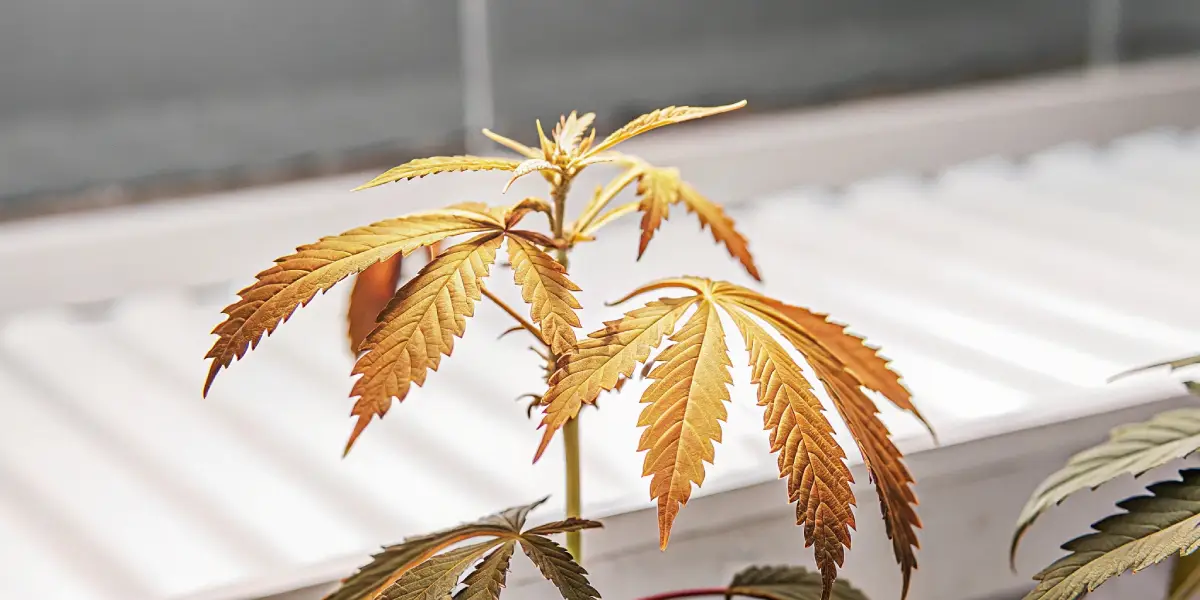
Nutrient Imbalances: Deficiencies and Toxicities
Cannabis plants require a delicate balance of nutrients to thrive, and any deviation from this balance can lead to visible stress symptoms such as wrinkled leaves. Nutrient deficiencies are common in plants that are not receiving the correct fertilizers or are growing in nutrient-poor soil. Similarly, excessive amounts of certain nutrients can result in toxicities, which are just as harmful as deficiencies. Both conditions can cause leaves to wrinkle, curl, and even die off if left unaddressed.
When a nutrient deficiency occurs, the plant is unable to carry out certain vital functions, which can lead to abnormalities in leaf structure. For example, a magnesium deficiency affects the plant’s ability to produce chlorophyll, leading to pale, wrinkly cannabis leaves that signal distress. On the other hand, nutrient toxicities often result from overfeeding or using the wrong types of fertilizers, leading to an accumulation of salts in the soil that can damage the roots. Both scenarios require careful observation and correction to restore balance and prevent long-term issues in cannabis growth.
Common Nutrient Deficiencies Leading to Wrinkled Leaves
Several nutrient deficiencies can result in wrinkled cannabis leaves, and magnesium, calcium, and phosphorus are among the most common culprits. Magnesium is responsible for photosynthesis, and a lack of it can cause the leaves to wrinkle along the edges as the plant struggles to produce energy. Calcium, which strengthens cell walls, can lead to distorted new growth, including wrinkled and curling leaves when deficient. Phosphorus is essential for energy transfer within the plant, and a lack of it can cause overall stunted growth, including wrinkled foliage.
Growers need to identify the early signs of these deficiencies to prevent long-term damage to their plants. Visual cues, such as discoloration or abnormal leaf texture, can provide clues to the underlying problem. Regularly testing the soil’s pH and nutrient content can help ensure that the plant receives a balanced diet, reducing the risk of deficiencies that lead to wrinkled leaves.
Nutrient Toxicities
Nutrient toxicities occur when plants are overfed or when salts accumulate in the soil, leading to an overabundance of certain minerals. Nitrogen toxicity, for example, can cause the leaves to turn dark green and shiny, often accompanied by wrinkling or curling. Other toxicities, such as excessive phosphorus or potassium, can also cause the leaves to become misshapen. To avoid these issues, it’s important to follow feeding guidelines carefully and flush the soil periodically to remove any salt buildup.
Proper nutrient management involves regular monitoring and adjustment of the feeding schedule based on the plant’s stage of growth. Over-fertilizing can be just as harmful as under-fertilizing, so always use nutrients in moderation and adjust the dosage according to the plant’s needs. By maintaining a balanced nutrient profile, growers can prevent toxicities that lead to wrinkled leaves.
Pests and Diseases: Hidden Culprits Behind Wrinkly Cannabis Leaves
Pests and diseases are often the hidden causes of wrinkled cannabis leaves. These unwelcome guests can infest your plants and cause significant damage if not dealt with promptly. In some cases, pests like spider mites or aphids may feed on the plant’s sap, leading to wrinkly cannabis leaves as the plant becomes weakened. Similarly, fungal infections can distort the plant’s growth, resulting in abnormal leaf shapes and textures. Early detection and treatment are essential to prevent long-term damage.
Pests can go unnoticed for long periods, especially when they are small and difficult to see with the naked eye. However, the signs of their presence are often evident in the plant’s leaves. Wrinkling, curling, or even holes in the leaves are common indicators that pests may be at work. Similarly, diseases like powdery mildew can cause the leaves to wrinkle and deform, as the plant struggles to fight off the infection. Regularly inspecting your plants and keeping the grow area clean are important preventative measures.
Common Pests That Cause Wrinkling Cannabis Leaves
Spider mites are among the most notorious cannabis pests, and their feeding habits can cause significant damage to the leaves. These tiny insects suck the sap from the plant, depriving it of vital nutrients. The leaves often appear wrinkled, curled, and covered in small yellow or white spots. Aphids are another common pest that feeds on plant sap, leaving behind a sticky residue called honeydew, which can further stress the plant and contribute to leaf wrinkling.
Both of these pests can reproduce quickly, making early detection critical. Use a magnifying glass to check the underside of leaves for signs of spider mites or aphids, and implement organic pest control methods such as neem oil or insecticidal soap to manage infestations. Introducing beneficial insects like ladybugs can also help keep pest populations in check.
Disease-Related Leaf Wrinkling
Fungal diseases like powdery mildew or botrytis can also cause wrinkling of the leaves. Powdery mildew appears as a white powder on the surface of the leaves and can lead to deformed, wrinkled foliage if left untreated. Botrytis, or gray mold, typically affects the buds but can also cause wrinkling in nearby leaves as the infection spreads. Root rot, often caused by overwatering, can indirectly lead to wrinkled leaves as the roots struggle to supply water and nutrients to the plant.
Preventing disease involves maintaining a clean growing environment with proper air circulation and humidity control. If disease is already present, removing affected leaves and using organic fungicides can help prevent the spread. Additionally, ensuring that the plant is not overwatered will reduce the likelihood of root-related diseases that cause wrinkling.
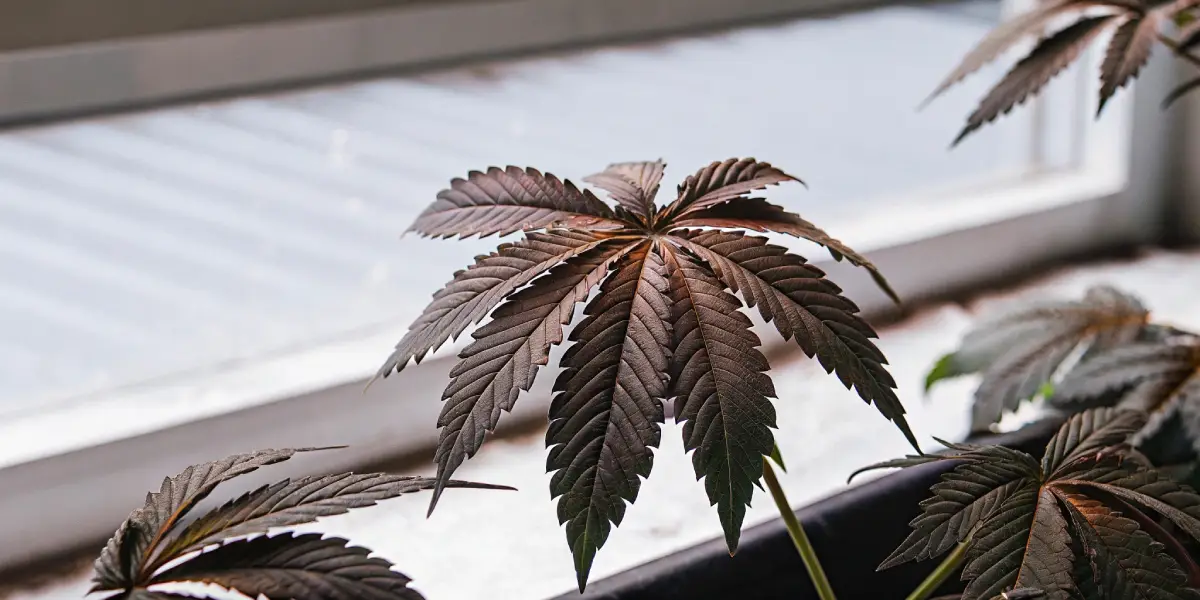
Genetics: Some Strains Are Prone to Wrinkly Leaves
In some cases, wrinkly leaves are simply a natural characteristic of the cannabis strain being grown. Certain strains, particularly those with heavy sativa genetics, may naturally produce leaves that appear crinkled or wrinkled. This genetic trait does not necessarily indicate a problem with the plant’s health, as long as the other growth indicators, such as color and bud development, appear normal.
Some cannabis strains are more resilient to environmental stressors and nutrient fluctuations, while others are more sensitive and prone to showing stress in their leaves. When growing a new strain, it’s important to familiarize yourself with its growth characteristics to understand whether wrinkled leaves are part of its genetic makeup or a sign of underlying problems.
How to Identify Genetic Wrinkling
Genetic wrinkling often becomes evident early in the plant’s growth and remains consistent throughout its lifecycle. Unlike stress-induced wrinkling, which typically worsens over time if the issue is not addressed, genetic wrinkling does not spread or cause further damage to the plant. If the plant continues to grow and develop normally, with healthy bud formation and no other signs of stress, the wrinkled leaves are likely due to genetics.
Growers can still optimize conditions to help minimize the appearance of wrinkling, even if it is genetic. Providing a stable environment, proper nutrition, and regular care will ensure that the plant grows to its full potential, even with its unique leaf structure. Knowing the strain’s specific characteristics can help set realistic expectations and prevent unnecessary adjustments to the grow regimen.
FAQs about Wrinkly Cannabis Leaves
Is it possible to reverse the wrinkling of cannabis leaves?
In many cases, it is possible to reverse wrinkly cannabis leaves if the underlying cause is environmental stress, nutrient imbalance, or watering issues. Once the problem is identified and corrected, new growth should appear healthy and free of wrinkles. However, if the wrinkling is caused by genetics, it cannot be reversed. That said, wrinkly weed leaves due to genetics do not negatively impact the plant’s overall health or yield, and the plant can still produce quality flowers.
When wrinkling is due to environmental factors, such as temperature or humidity fluctuations, adjusting the grow room’s conditions can alleviate the stress. Similarly, balancing nutrient levels and adopting proper watering practices can help the plant recover. It’s important to address the issue as soon as possible to prevent further damage, but rest assured that most plants will bounce back once the underlying cause has been managed.
How do I know if wrinkled leaves are a sign of a serious issue?
Cannabis leaves wrinkled can be a sign of a serious issue when they are accompanied by other symptoms, such as discoloration, curling, or brown spots. These additional signs often indicate that the plant is experiencing stress from pests, diseases, or nutrient imbalances. If left unaddressed, these issues can stunt growth, reduce yield, or even kill the plant. Regularly inspect the leaves and overall plant health to determine whether the wrinkling is an isolated occurrence or part of a larger problem.
If the wrinkling appears suddenly or worsens over time, it’s important to act quickly. Begin by checking the environmental conditions, watering habits, and nutrient levels. If no issues are detected, consider inspecting the plant for pests or signs of disease. Early intervention is key to resolving the problem before it escalates and affects the plant’s development or yield potential.
Can wrinkled leaves affect the quality of my cannabis harvest?
Wrinkled leaves themselves may not directly affect the quality of your cannabis harvest, but they are often a sign that the plant is under stress. Prolonged stress can reduce the plant’s ability to produce large, potent buds, ultimately impacting the yield and quality of the harvest. Addressing the underlying cause of wrinkled leaves, whether it’s environmental, nutritional, or related to pests or diseases, will help ensure that the plant remains healthy and capable of producing high-quality flowers.
If the wrinkling is due to genetics, it will not have a negative effect on the final harvest, as long as the plant is otherwise healthy. In most cases, wrinkled leaves are just one symptom of a larger issue that needs to be resolved. By keeping the plant stress-free and addressing any potential problems early on, growers can ensure that the wrinkling does not impact the quality or quantity of the final yield.

